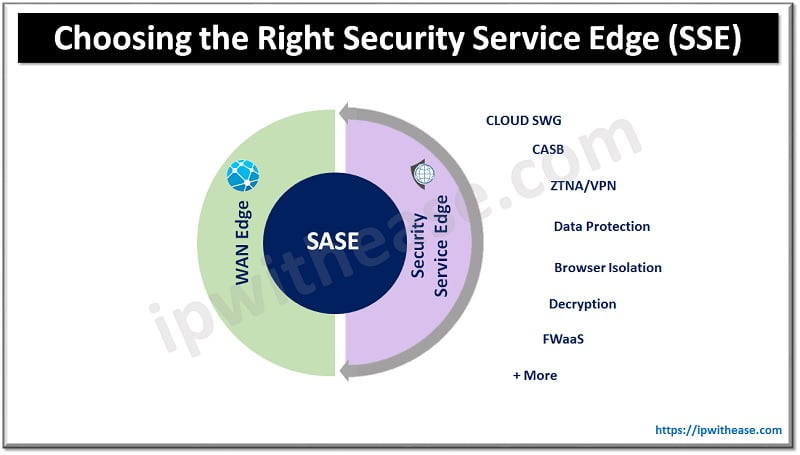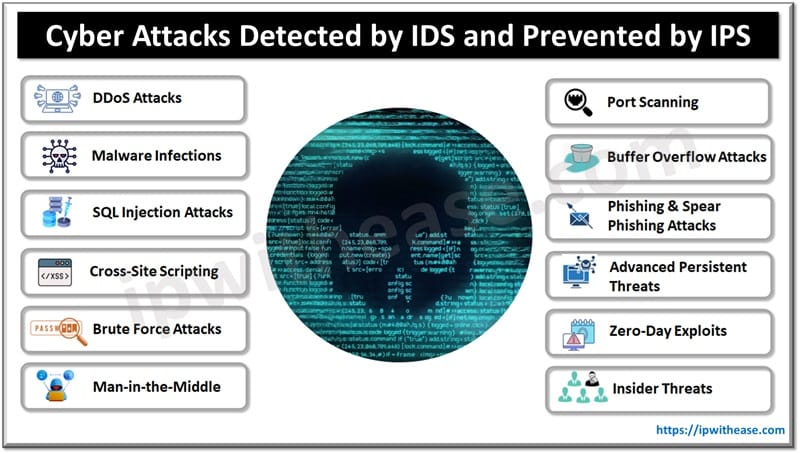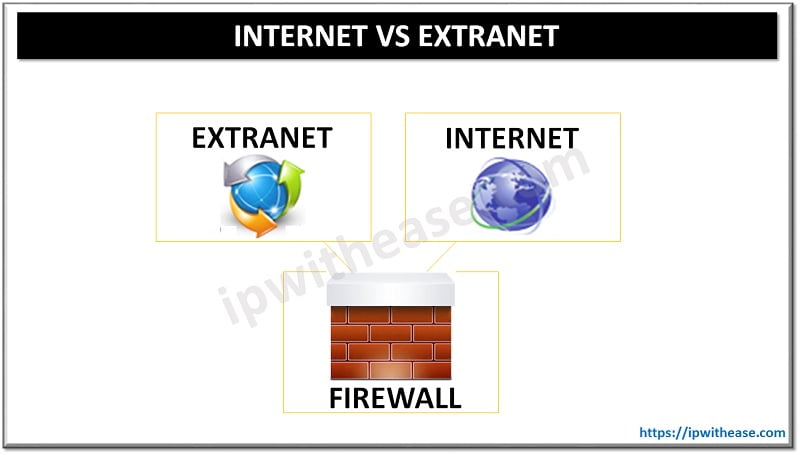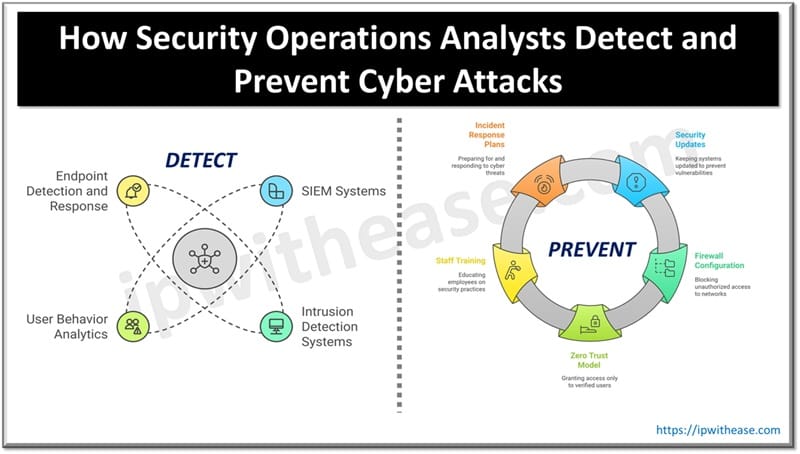Table of Contents
Moving towards the cloud requires organizations to calculate their transition by evaluating every security platform. Organizations must ensure the availability of security control policies as hackers have equipped themselves with the latest techniques to inject malware into cloud infrastructures and suspend service.
Organizations need a robust security platform that recognizes and mitigates threats. Therefore, you should consider Security Service Edge implementation to protect your cloud infrastructure from modern cyber threats by converting your network into micro-segments and enhancing monitoring to detect unusual behavior on the cloud.
What is Security Service Edge?
Gartner introduced Security Service Edge (SSE) in early 2021 as a cloud-centric converged solution that accelerates an organization’s digital transformation plan by securing cloud services and applications. An SSE solution contains the following components:
- Access control
- Data security
- Threat protection
- Network monitoring
- User control policies
What’s included in an SSE Solution?
An effective SSE solution contains the following security services:
- Cloud Access Security Broker
A CASB is an intermediary between users and the cloud; it eliminates data visibility, security, and compliance gaps. You can use CASB to extend security policies from your current on-premises infrastructure and create new cloud-specific control policies. An SSE model automatically discovers and controls SaaS risks while serving as an API-based security scanning process. - Secure Web Gateway
An SWG acts as a cyberbarrier or checkpoint that prevents unauthorized traffic from accessing the organization’s cloud resources. SWG allows users to access approved and secure websites while protecting them from web-based cyber threats through URL filtering, enhanced visibility, malware inspection, and web access controls. - Zero Trust Network Access
A ZTNA solution allows organizations to enforce granular, adaptive, and user-centric security policies to provide secure access to private applications available on the cloud. You can use ZTNA to transform your network into a dynamic policy-based cloud edge to support your access and security requirements as you migrate to the cloud. - Data Loss Prevention
DLP makes it easier for organizations to classify data according to policies designed according to the information and location of the file. DLP tools apply protection policies in real-time to provide the necessary protection to your sensitive data, limiting access and the flow of information. Mainly, DLP policies prohibit unauthorized access, changes, or sharing of classified files. - Remote Browser Isolation
SSE also includes RBI as a powerful threat protection tool that contains all browsing activities within an isolated cloud environment. RBI protects the users from malware and malicious code that hackers can hide on websites. Therefore, RBI eliminates the chances of malicious code accessing your remote users as they surf the internet. - Firewall as a Service
FWaaS acts as a virtual firewall that secures data and applications on the cloud. An SSE solution leverages FWaaS to integrate traffic from numerous sources like on-site data centers, branch offices, and mobile users. You can use FWaaS to deliver consistent application and security enforcement of access policies to all users while giving you complete visibility and control over the network.
What a Converged SSE Platform looks like?
After combining different technologies into a unified platform, SSE provides:
- Simplified policy enforcement
- Proactive data protection
- Traffic encryption for sensitive data transfers
- End-to-end threat protection
- Better understanding of users and devices

Making the Right Choice with SSE
To protect your organization and reduce the threat of cyber attacks, you need a holistic and integrated approach like SSE to enhance your cybersecurity and security policy. Here are some capabilities you should include in your SSE platform.
Introducing Inline and SSL inspection
One of the critical values of SSE is to deliver unified security inspection across the web, internet, data, and cloud applications. Since inspection is an integral element of an SSE platform, you must include inline inspection across your cloud applications and business traffic. Your business traffic will abruptly halt if your SSE platform has a problem.
Therefore, you should run extensive stress tests and select a platform that offers performance and security for large organizations. Additionally, SSE platforms should provide a proxy inspection system to detect threats as they need to support scalability to accommodate the surge of users and traffic.
Utilizing Zero Trust
Most organizations decide to move towards SSE solutions and implement a ZTNA framework that operates on don’t trust, verify all principles. You can provide remote access through user-to-app connectivity without allowing the user on your network. ZTNA converts the network into multiple microsegments for controlling and monitoring the network.
Users are continuously authenticated and authorized before granting limited access according to their job roles. You can define granular control policies to enhance your network security as you manage a remote workspace. Since a ZTNA solution continuously assesses users in the background, it can immediately detect unusual behavior, revoke access and notify the network administrator.
Optimizing the Cloud
You can use SSE to optimize your cloud and enhance the user experience by streamlining how remote employees utilize cloud resources. SSE can create a direct path to the internet and cloud applications to increase speed, productivity, and efficiency. Elements like Single Sign On or Multi-Factor Authentication reduce the need to use multiple credentials to log into different applications and services.
Reducing the Attack radius
SSE reduces the attack radius by converting the network into closely monitored microsegments. Even if attackers gain access to the cloud, their access will be limited to the services and resources authorized for the network segment. By combining ZTNA and CASB, SSE restricts lateral movement over the network to ensure no user gains access to other segments. Therefore, Secure Service Edge ensures network security and data integrity over the cloud.
Conclusion
SSE equips organizations with a robust network security solution that makes controlling and restricting network usage easier. Granular security policies make it easier for IT managers to observe users on the network and mitigate risks, if any. SSE also uses ZTNA to continuously authenticate and authorize user requests based on string policies based on users, devices, and roles. You can use SSE to convert your network into micro-segments and reduce the attack radius.
Continue Reading:
Microsegmentation vs Zero trust- What’s The Difference?
SASE (Secure Access Service Edge): Cyber Security
ABOUT THE AUTHOR
IPwithease is aimed at sharing knowledge across varied domains like Network, Security, Virtualization, Software, Wireless, etc.



